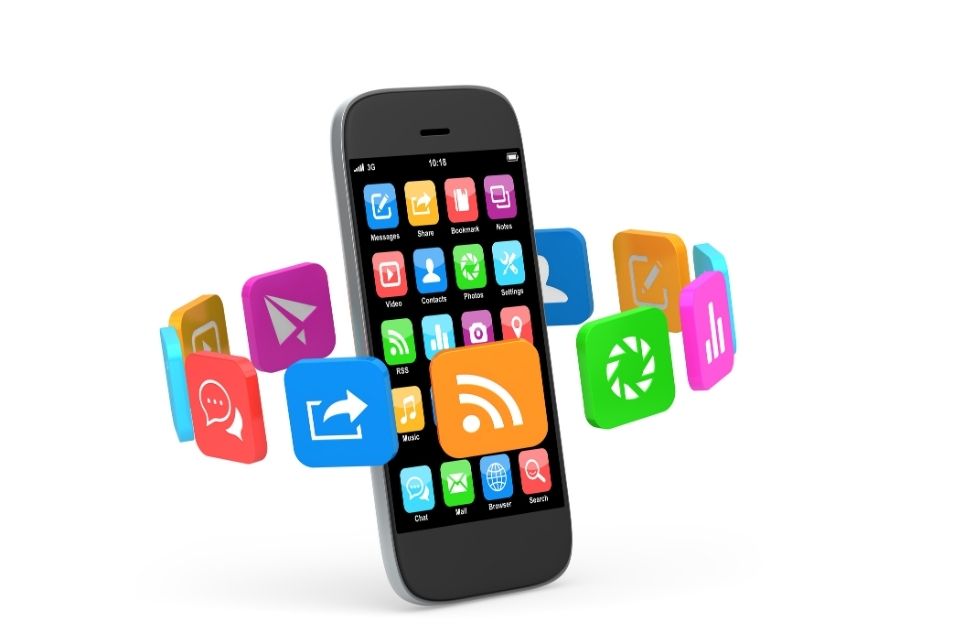
Staying Connected: Cell Phone Tips for Expats
Staying connected abroad is crucial, whether you’re calling loved ones back home or navigating your new city. But figuring out foreign cell phone plans can feel overwhelming. Fear not, expat adventurer! This guide will break down everything you need to know to set up your phone in your host country.

Want to Keep Your Old Number? (Optional)
Now, let’s talk about keeping your old number. There are a few ways to potentially hold onto that familiar number:
- Join a Family Member’s Family Plan: If someone back home has a family plan with international calling, see if you can join. This can be more expensive than Google Voice, but you keep your existing phone. You can then get a cheap second phone with a local SIM card in your host country and use it as a hotspot when needed. Just make sure your phone holds a dual SIM card or be prepared to purchase an additional phone.

- Google Voice: Connect your existing number to Google Voice and then buy a local SIM card in your host country. You can receive calls and texts for free, but some banks might not be able to send you texts on GV.
- Get an International Plan: Your home carrier might offer an international plan, but this can be pricey. Even with an international plan, you might still need a local number for some apps.

Watch EXPATS TOOLKIT on YouTube
Expats Toolkit has created a YouTube channel offering real experiences of moving and living abroad. I will share details of how to go about deciding to move, transitioning into a new country, and many other helpful tips to make this process go smoothly.
CLICK HERE TO SUBSCRIBE
Choosing a New Plan in Your Host Country
Research Local Mobile Networks: Investigate the major carriers in your host country, their coverage areas, and the types of plans they offer. Consider factors like data allowance, call minutes, and text messages.

Short-Term Options
If you are not sure how long you will be staying in your host country but don’t want to pay for international cell service in your home country, here are some options:
- Purchase a Local SIM Card: Head to a local mobile carrier store or authorized retailer to purchase a SIM card. Make sure it’s compatible with your phone’s size (standard, micro, or nano). Power off your phone, insert the SIM card, and follow any on-screen prompts for setup.
- Purchase an eSIM: For short stays (weeks or months), if your phone is compatible, consider an eSIM from a service like Airalo. These are digital SIM cards you activate before or upon arrival at your destination. The benefit of an eSIM is that you don’t need to deal with a physical SIM card or open your phone’s hardware.


PSST: HERE ARE SOME OTHER YOUTUBE POSTS YOU MAY WANT TO CHECK OUT :
Should I Move Abroad?
Choosing the Perfect Country to Live Abroad
Secrets No One Tells You About Visa and Residency Requirements
Identifying Cultural Differences Before Moving Abroad
What is Expats Toolkit?
Additional Tips
- Configure APN Settings: Sometimes, you might need to manually configure the Access Point Name (APN) settings for data connectivity. Check with your carrier or use online resources for the correct settings.
- Top Up or Activate: Depending on the plan, you might need to top up your prepaid balance or activate your plan. This may involve purchasing a prepaid card, using a mobile app, or visiting a carrier store.
- Set Language & Region: Adjust your phone’s language and region settings as needed to match the local language.
- Emergency Numbers: Update your phone’s emergency contact numbers to match the local emergency services in the foreign country.
- Download Local Apps: Explore and download apps that might be helpful, like maps, transportation tools, and language translation apps.

- Roaming (if applicable): If you want to use your old number abroad, check with your home carrier for international roaming options and be aware of potential charges, which can be very high.
- Messaging Apps: Install and set up messaging apps like WhatsApp or Telegram to stay connected with friends and family using data or Wi-Fi, reducing reliance on traditional SMS.

- Explore Wi-Fi Options: Identify local Wi-Fi hotspots and networks. Connect to secure Wi-Fi when available to conserve mobile data and enhance connectivity.
- Test Calls: Make test calls to local numbers to ensure everything is working properly. Verify both incoming and outgoing calls.
- Backup Data: Before making any changes, back up your phone’s important data, such as contacts, photos, and documents, to prevent data loss.
- Data Usage: Familiarize yourself with data usage settings on your phone. Set limits or alerts to manage data consumption and avoid unexpected charges.

By following these steps, you’ll be well-equipped to set up your new cell phone in a foreign country, ensuring reliable communication and access to essential services during your stay.
If you are looking for more information about moving and living abroad, then visit Expats Toolkit.
If you want to read more, follow me on Facebook or Instagram.
If you are looking to travel and need some tips on places to visit, then follow me, Traveling Lens Photography, on Facebook, Instagram, or Pinterest.
Happy Adventures!



